The Caucasus - Azerbaijan - Part 2 - Baku
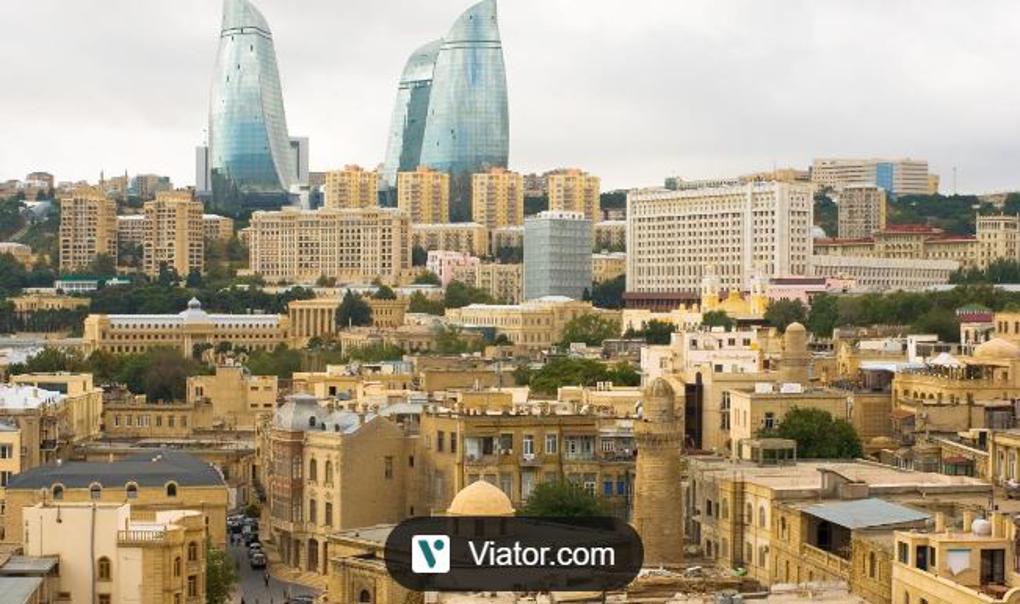
We spent a couple of days in Baku, a city where the ancient meets the new. Within fortified walls, the old town is a UNESCO site, a complex of cobbled laneways, winding up to the Shirvan Shah Palace, home to the rulers from 1382-1500CE.
Considered a pearl of Azerbaijani architecture, it may have been built around a sacred place dedicated to a Sufi saint. The complex includes a throne room, a harem (where the women lived), several mausoleums, a minaret, a mosque, and a bathhouse.
Today, the main parts of the palace are used as a museum, displaying items that would have been used and worn in the Middle Ages in Azerbaijan.
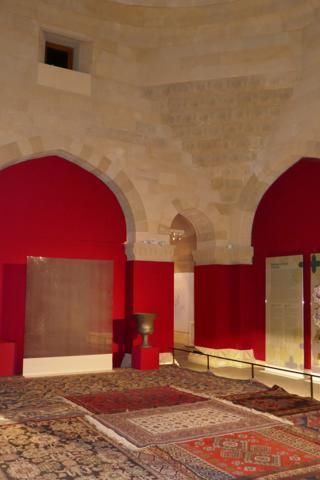
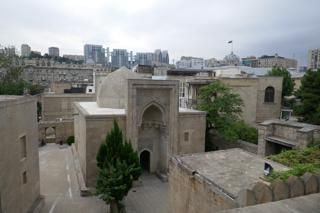
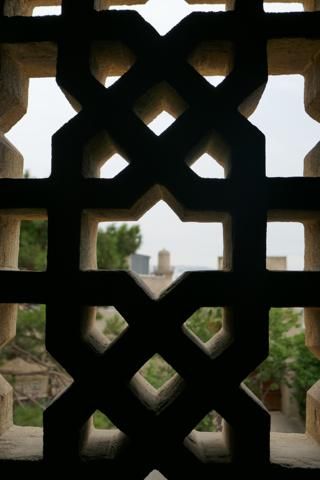
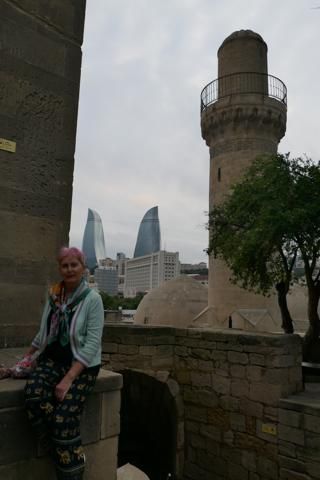
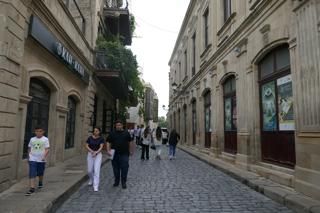
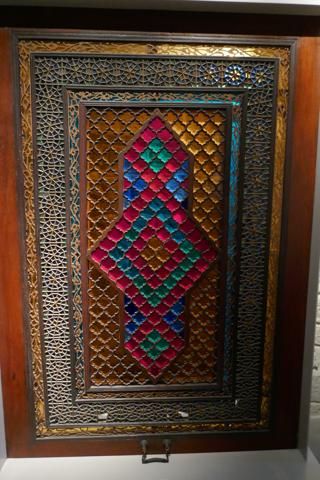
It is thought that an architectural school was developed here - the school of Shirvan-Absheron - as characteristics include the use of indigenous limestone, carefully sculpted stone plates and carved stone, lattices, Shebeke windows and harmonious proportions of the rooms in the Palace are located across 3 floors with different shapes and sizes.
The art of Shebeke windows originated in the 18th century when traders exchanged spices for Murano glass from Italy. Skilled craftsmen use intricately cut pieces of mosaic made of glass are fitted into wooden frames made of chestnut or walnut wood without the use of nails or glue.
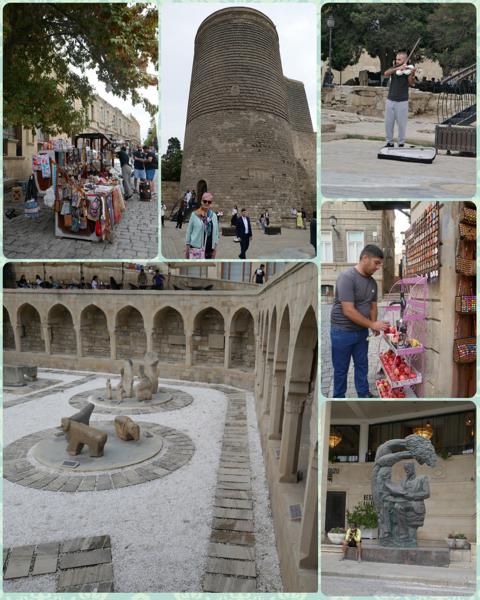
Another example of Shirvan-Absheron architecture is the massive stone Maiden Tower, located near one of the town’s entrances. The original function of the tower is not known, but certainly it was used as part of the fortifications. Our guide recounted just one of the legends:
A King fell in love with his daughter and decided to marry her. This prospect was not welcomed by her and to delay the marriage, she asked her father to build the tallest tower possible. He did just that - the daughter climbed the stairs, telling him, she intended admiring the view, instead throwing herself off the top crashing onto the rocks far below.
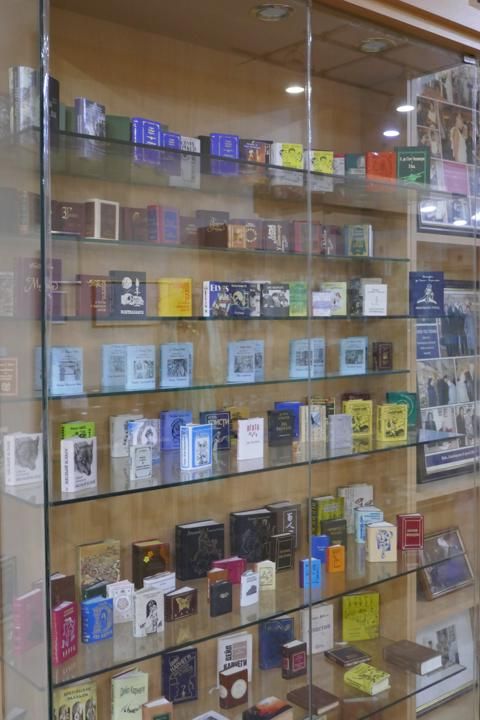
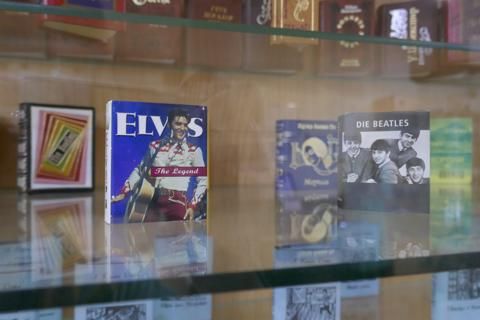
As we wound away through the old town we passed by the Museum of Miniature Books displaying thousands of books written in Azeri, Russian, English & German by authors such as Pushkin, Dostoyevsky, Gogol, and Chukovsky.
The oldest book a miniature copy of the Quran, dating to the 17th century, while the smallest (6mm x 9mm) a Russian book The Most Miraculous Thing - displayed in a box of its own requires a magnifying glass to read it!
Sadly we could not spend much time here, but if books are of interest, you may enjoy reading the bookmark link for more about this museum and its large collection of miniature books.

From medieval architecture of the old town, we moved to the 21st century visiting the Heydar Aliyev Centre, designed by the well-respected Iraqi-British architect Zaha Hadid and opened in 2012.
It looks different from every angle - an astonishing curved, wave-like shape with a sweeping staircase that seems to float into the spacious interiors. There is not a single straight line! I loved it!
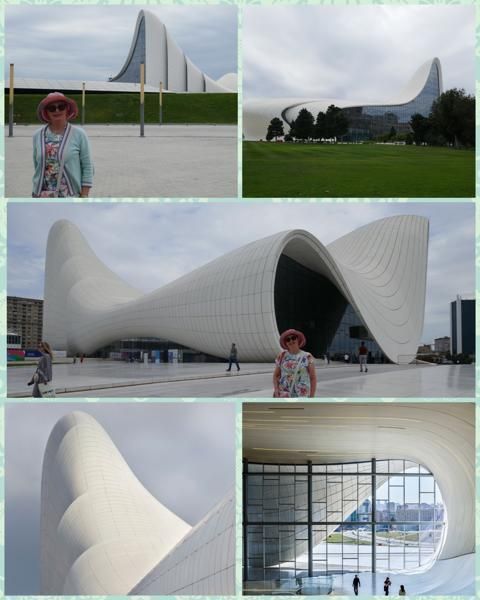
Beautiful from outside and within, it’s a museum which covers the life and legacy of the national leader Heydar Aliyev, (3rd president from 1993-2003).
Exhibitions displayed miniature versions of the country's key buildings, a unique collection of classic cars, as well as traditional costumes and marvellous carpets. I spotted a Yayoi Kusama^ flower sculpture, very similar to a commission in the new North Wing of the Gallery of NSW in Sydney.
We featured a post on Yayoi Kusama recently which you can acccess by clicking here.
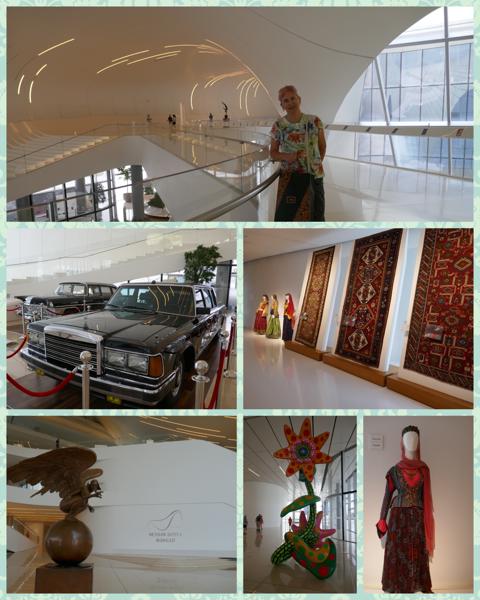
All the restaurants were tastefully decorated, especially for our last night in Baku.
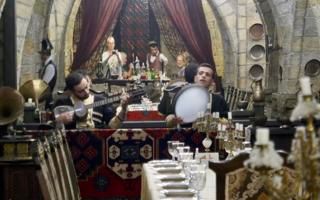
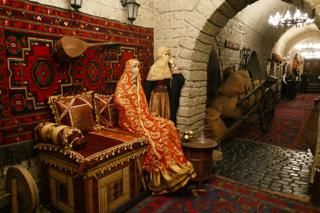
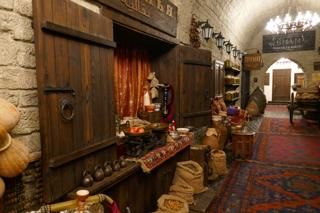
Before we left Baku I wanted to explore a little on my own, so I decided to leave dinner early and walk back to the hotel - it was Saturday night and the city abuzz with people, lights and colour.
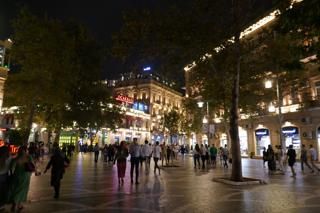
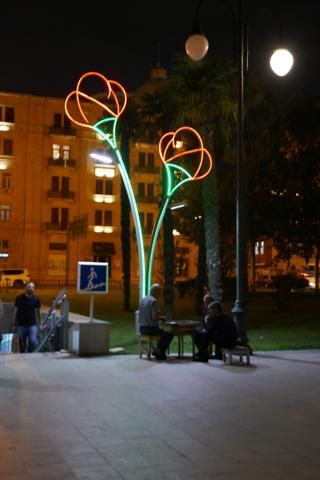
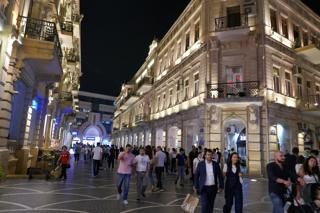
Join me tomorrow as we head into the countryside of Azerbaijan

